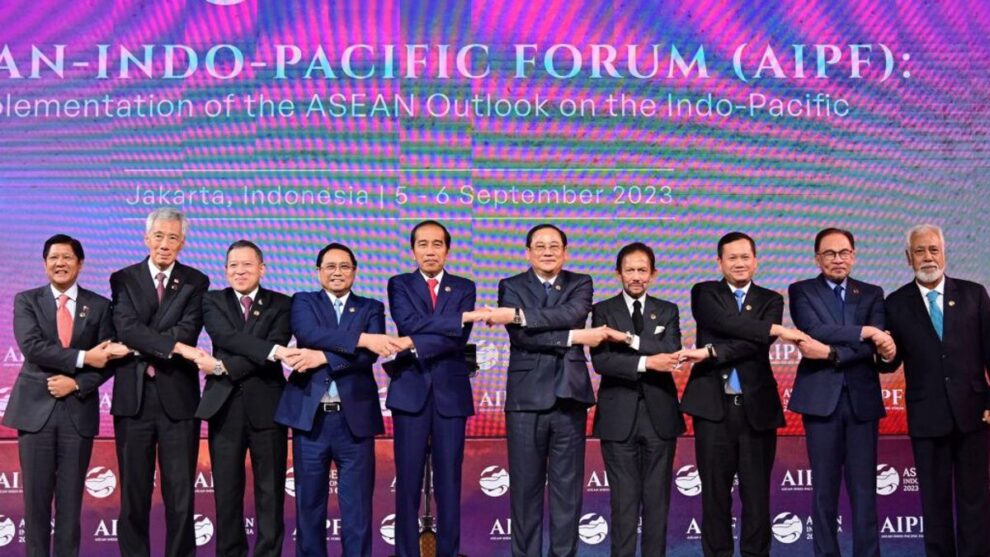The ASEAN Summit week in early September was filled with various impressions. To start, businesses convened the ASEAN Business & Investment Summit (ABIS) and followed with government-led ASEAN Leaders meetings, along with more conversations at the ASEAN-Indo-Pacific Forum (AIPF). Thousands of policy wonks, industry captains, and entrepreneurs from around the world gathered in the busy and vibrant city of Jakarta.
For years, ASEAN has been regarded as a normative regional grouping, comprising ten nations with diverse interests and backgrounds, and almost identical annual shared narratives on the importance of Southeast Asian economic integration. Initially, businesses had low expectations, hoping simply that meeting more people would lead to more opportunities.
However, with Indonesia leading ASEAN as the chairmanship this year, they introduced a strong concept of “ASEAN Matters” and “Epicentrum of Growth.” These terms reflect Indonesia’s desire to infuse more energy and optimism into Southeast Asia on the global stage. It’s also evident that Indonesia capitalized on the post-pandemic momentum to tap into shifting growth potential.
In my role supporting the ASEAN Business Advisory Council (ASEAN-BAC), the official private sector advisory group of Southeast Asian nations, I felt the growing confidence and unity of ASEAN as a single entity. The business council promoted “ASEAN Centrality” with the aim of making ASEAN the main driver of its own regional growth, without external strategic interference.
Throughout the year, the mission of advancing regional connectivity has remained the top priority. Leaders and businesses are committed to expanding and investing in efforts to enhance physical, digital, people, and social connectivity among ASEAN territories and societies. This is crucial for realizing the ASEAN Economic Community’s visions on the ground.
The concept of “ASEAN Incorporated” was also introduced, endorsing more synergized public and private partnerships across different sectors. While governments may create various regional frameworks and regulatory initiatives, active support from businesses is needed to bring capital, technology, and viable economic models to the table.
A future-ready ASEAN requires significant breakthroughs, and fortunately, some commitments were made this year toward that goal.
First, the creation of ASEAN Community Vision 2045 aims to develop forward-looking action plans to address more complex challenges in the region. The current 2025 vision is being reinvented to foster a more people-centered and innovative ASEAN integration.
Second, ASEAN has turned its attention to borderless Southeast Asia, focusing on regional payment connectivity, financial integration, harmonization of standards, and electric vehicle ecosystems. These efforts will help narrow the development gap among member nations, unlocking the potential of each nation.
Third, ASEAN presents an attractive FDI opportunity for many countries, driven by increasing domestic growth and consumer demands. However, it’s worth noting that the percentage of intra-ASEAN investment remains quite low, accounting for only about 12-15 percent of total investment in recent years. The ASEAN-BAC has proposed an initiative called ASEAN Business Entity (ABE) to provide more technical, regulatory, and access-based incentives for Southeast Asian companies to invest in their own region. These incentives encourage companies that have operated in multiple ASEAN states to expand their investment scope and coverage.
While necessary reforms are needed in trade and economic policies, the strategic implementation of connectivity is crucial to boost intra-ASEAN investment and trade ties.
Lastly, it is essential for ASEAN to solidify its position on the global stage. This includes addressing challenges such as the European Union’s new Deforestation Regulation, which affects regional strategic commodities, and anticipating future economic and political dynamics in the Indo-Pacific.
There is great hope for the new leadership in the region. With mostly new administrations in many ASEAN member states, including Thailand, Cambodia, the Philippines, Laos, Malaysia, and soon Indonesia, they are working to reinvent the region as a hub of global growth while preserving the ASEAN identity.
Source : The Geopolitics










